Alibre Design 3d Part Assembly
See it All Together
What is a 3D Assembly?
An assembly is simply a collection of individual parts that have been arranged in such a way that they represent a finished design. When your assembly is complete, you should be able to see your whole design and in some cases interact with it.
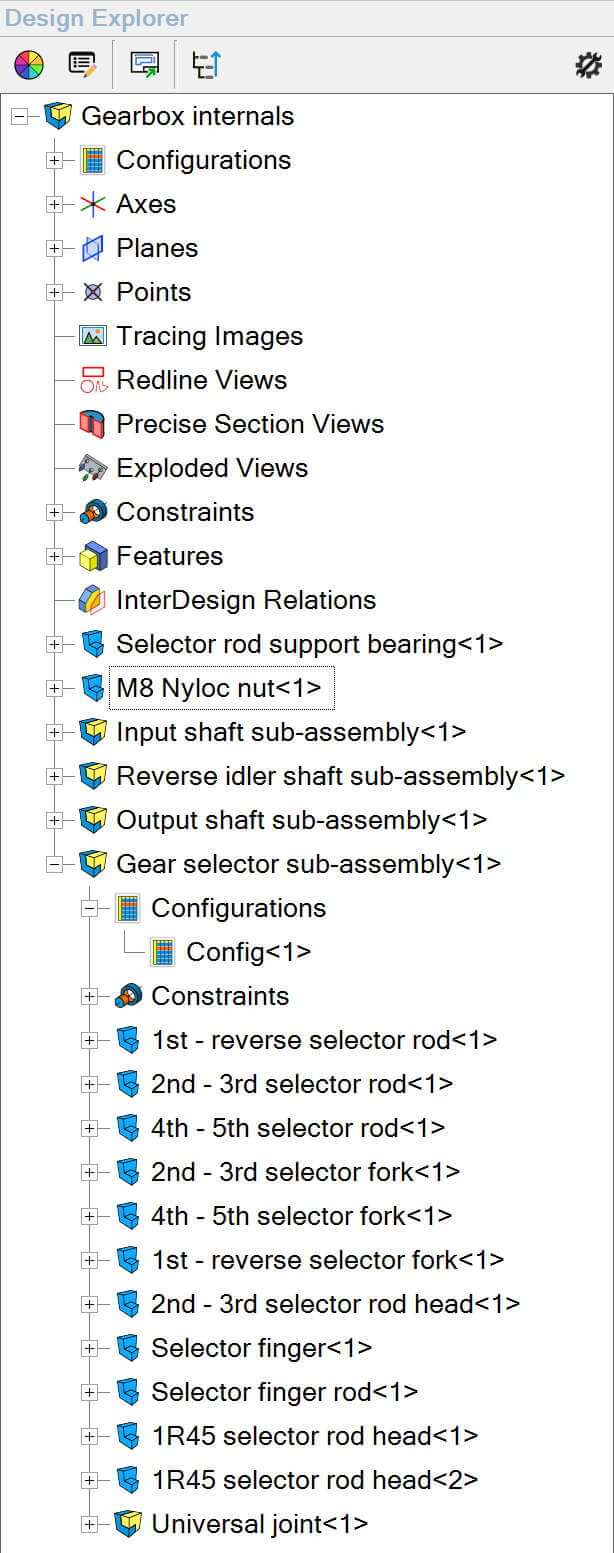
Assembly Structure
An important aspect of managing complexity is creating a good assembly structure. Individual parts and small collections of parts, called sub-assemblies, are the components of a larger assembly.
Grouping components together makes organization easy.
Bottom-Up Design
Bottom-up design refers to the process of creating individual components and then bringing them together into an assembly, using constraints to define positional relationships.
This method is ideal when modeling parts that are unlikely to change as the design evolves, such as fasteners, motors, and other off-the-shelf components. Editing parts designed in this way requires manual changes to the part's sketches and features.
Top-Down Design
Top-down design refers to the process of creating parts directly in an assembly and using geometry already in the assembly as a reference.
This method is ideal when modeling components that have rules, but not necessarily exact dimensions for every characteristic. When you change the position or shape of referenced parts in the assembly, your top-down-designed component automatically updates its shape or position in real time.
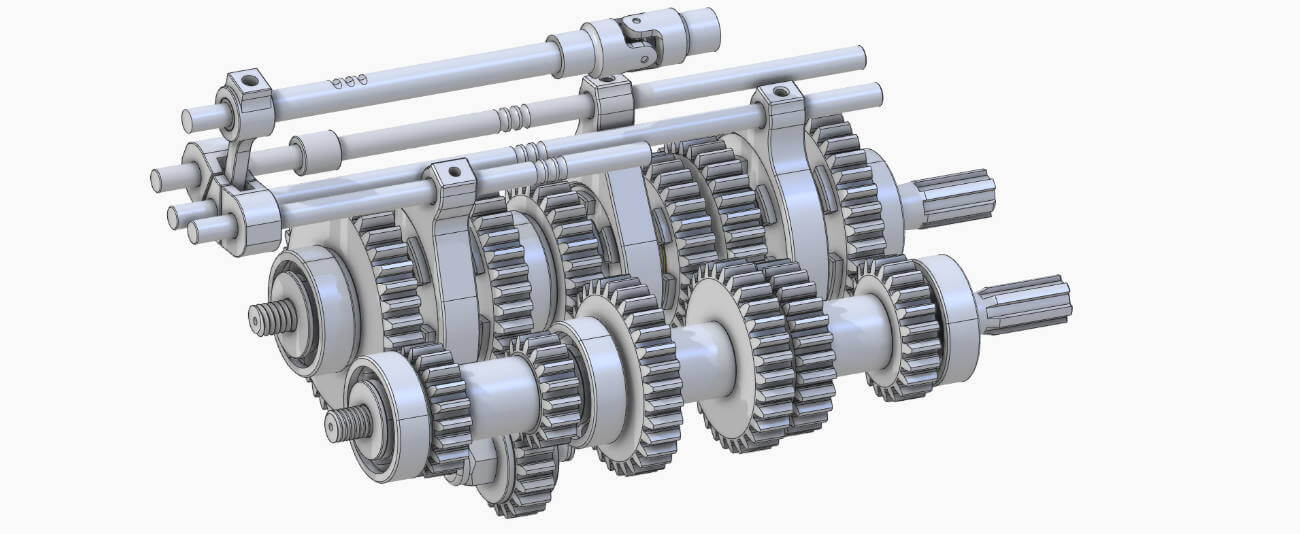
A transmission modeled in Alibre Atom3D.
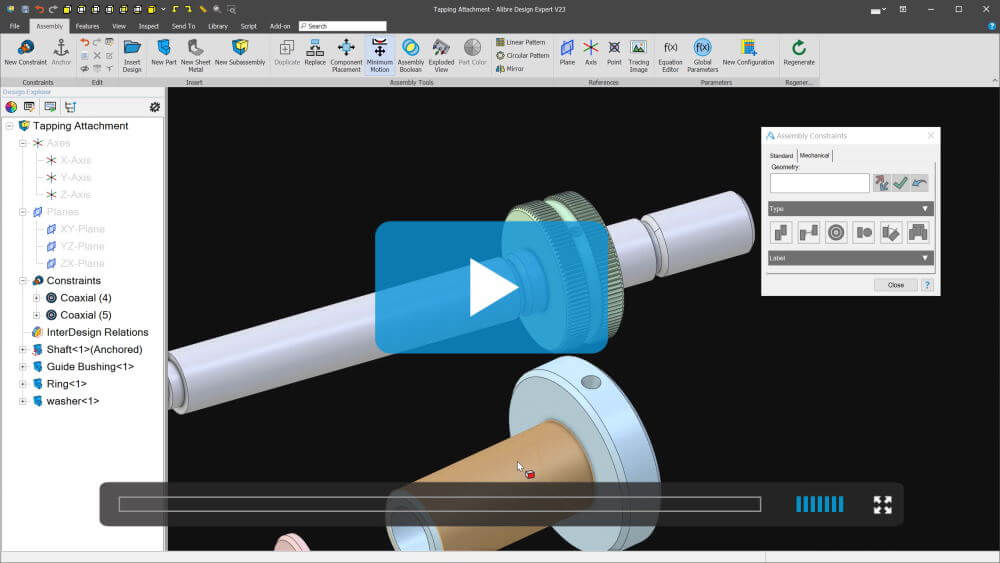
Putting It Together With Constraints
Constraints are relationships between components and/or reference geometry that position or move components relative to each other. Two faces touch - a pin goes through a hole - 2 gears turn each other at certain rate - that kind of thing.
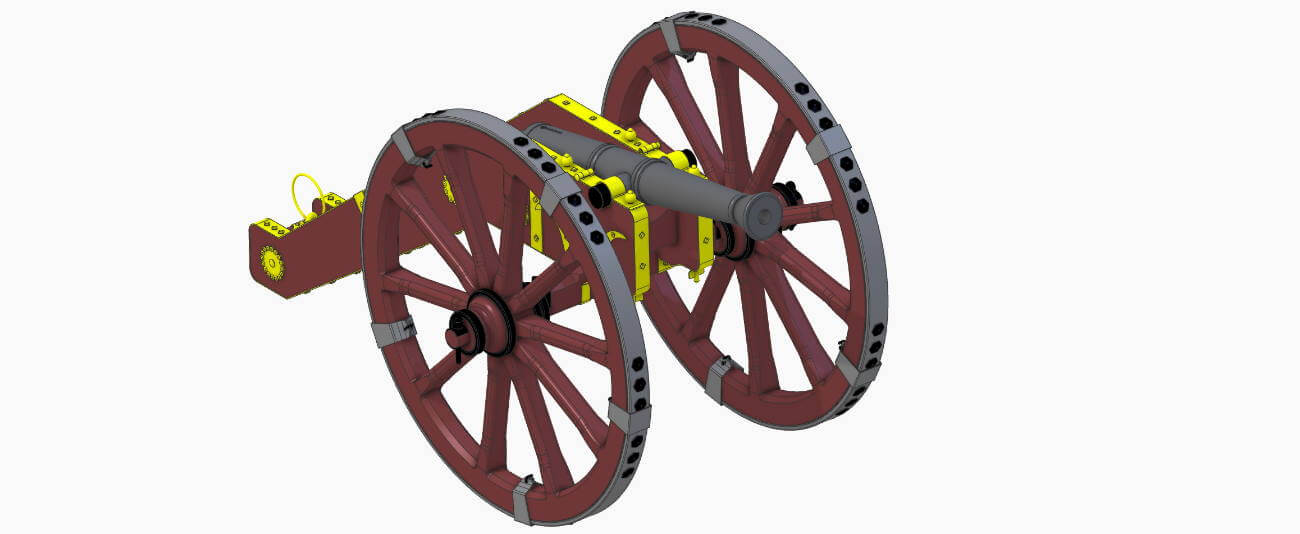
A replica of a historic cannon created in Alibre Atom3D.
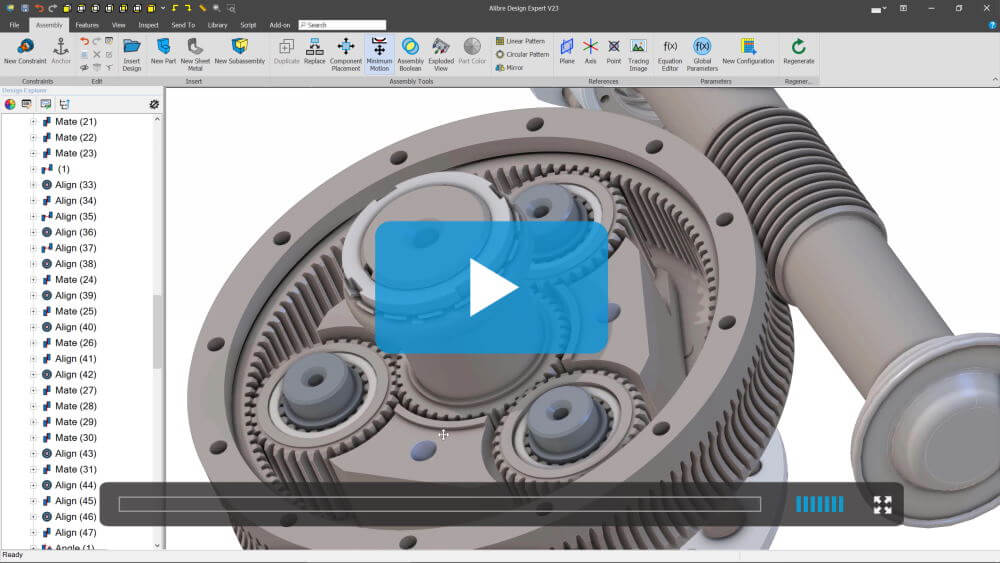
Mechanism Motion
After defining constraints, you can drag components of the model around and the motion will transfer accurately to other components.
Gears, pulleys, and rack/pinion are available in:
Alibre Design Expert
Physical Properties
Instantly query important physical characteristics of a design. Some properties such as mass are aggregated from each component's material settings and rolled up. Other properties like Center of Mass also look at the position of components in an assembly.
Display data in standard or scientific notation.
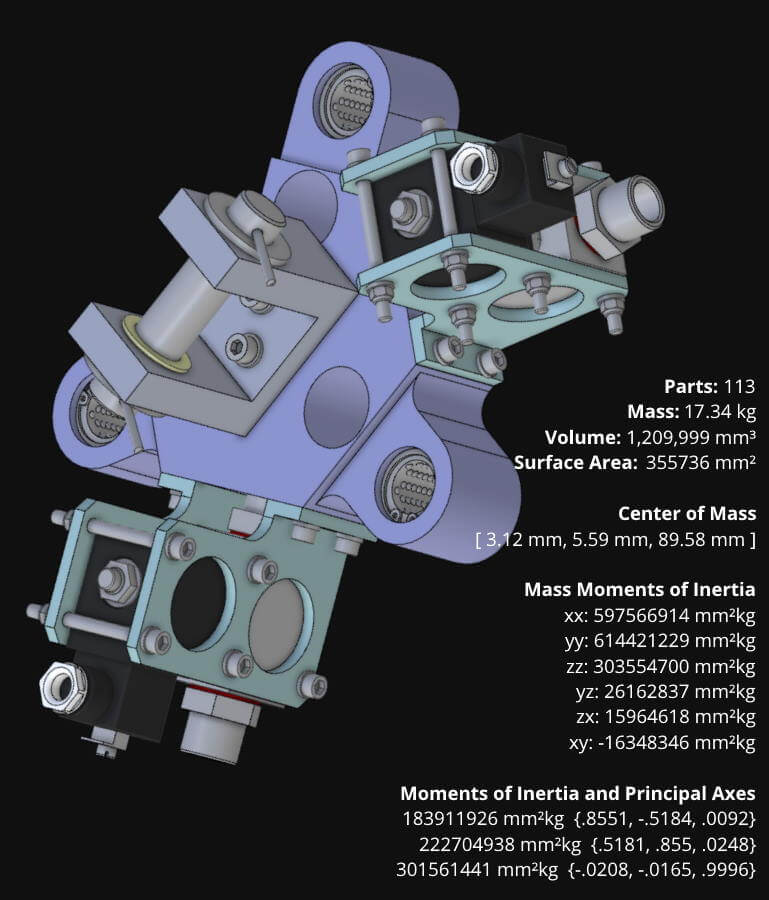
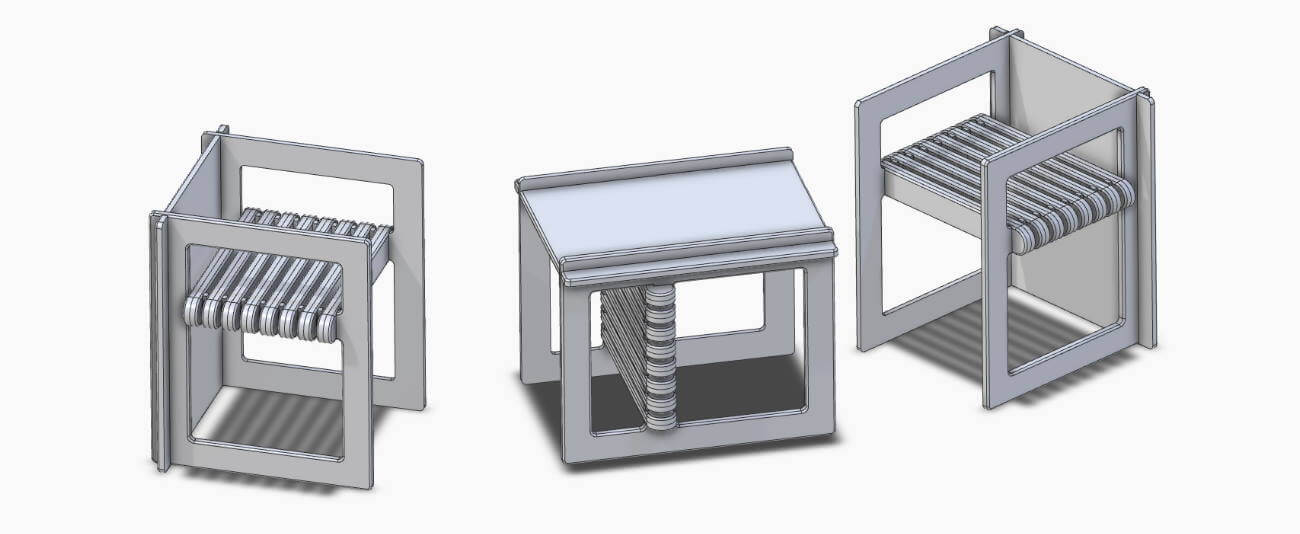
A woodworking concept of a chair that doubles as a table made in Alibre Atom3D.
Interference Detection
Ensuring overlapping parts are corrected before a design is finalized is an important pre-production step. Interference detection checks for overlaps globally or between specified components.
Various visualization tools make it easy to see where overlaps occur, and data relating to the amount of overlapping volume lets you decide if an overlap is significant.
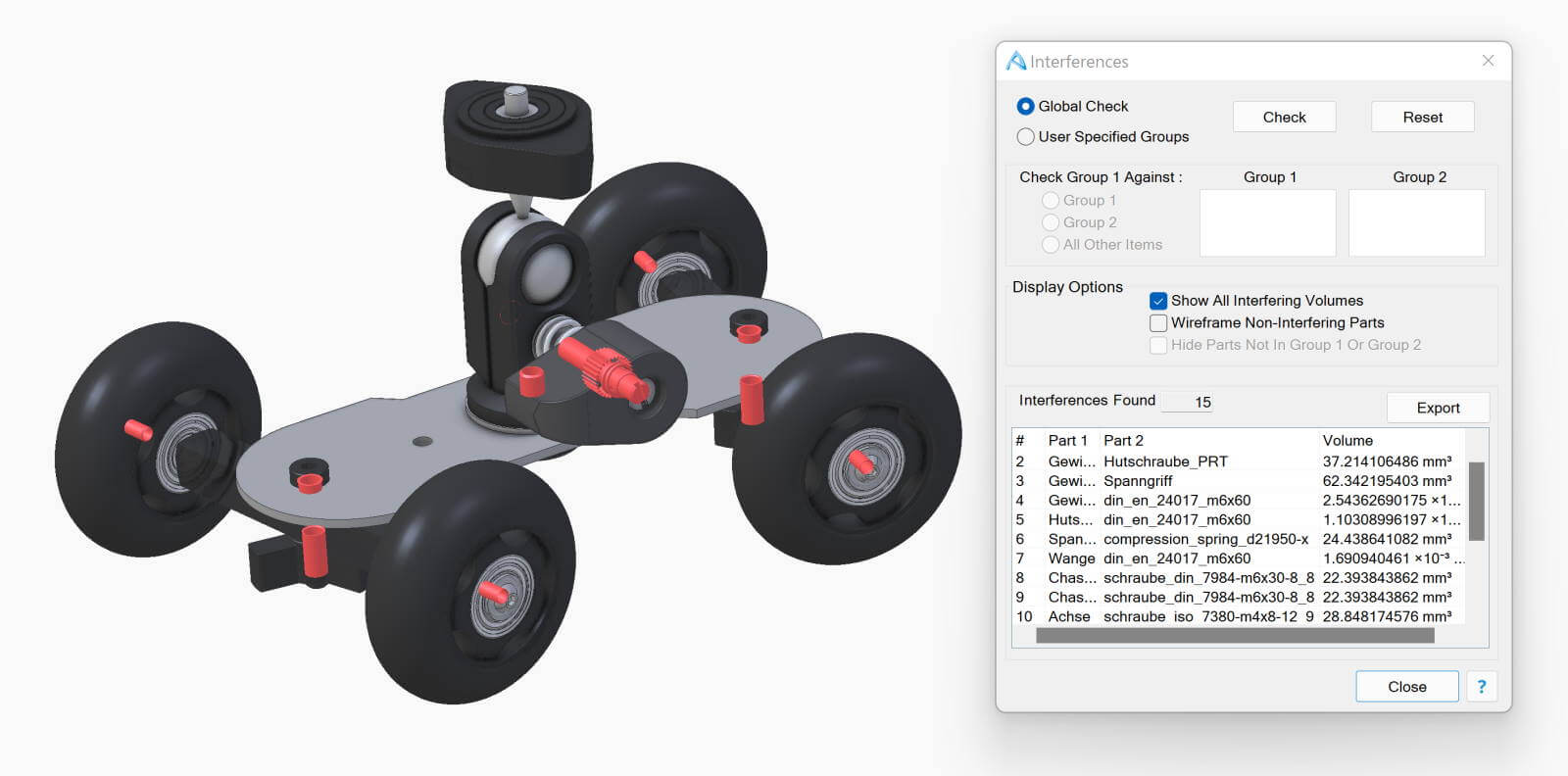
Overlapping volumes between parts are highlighted.
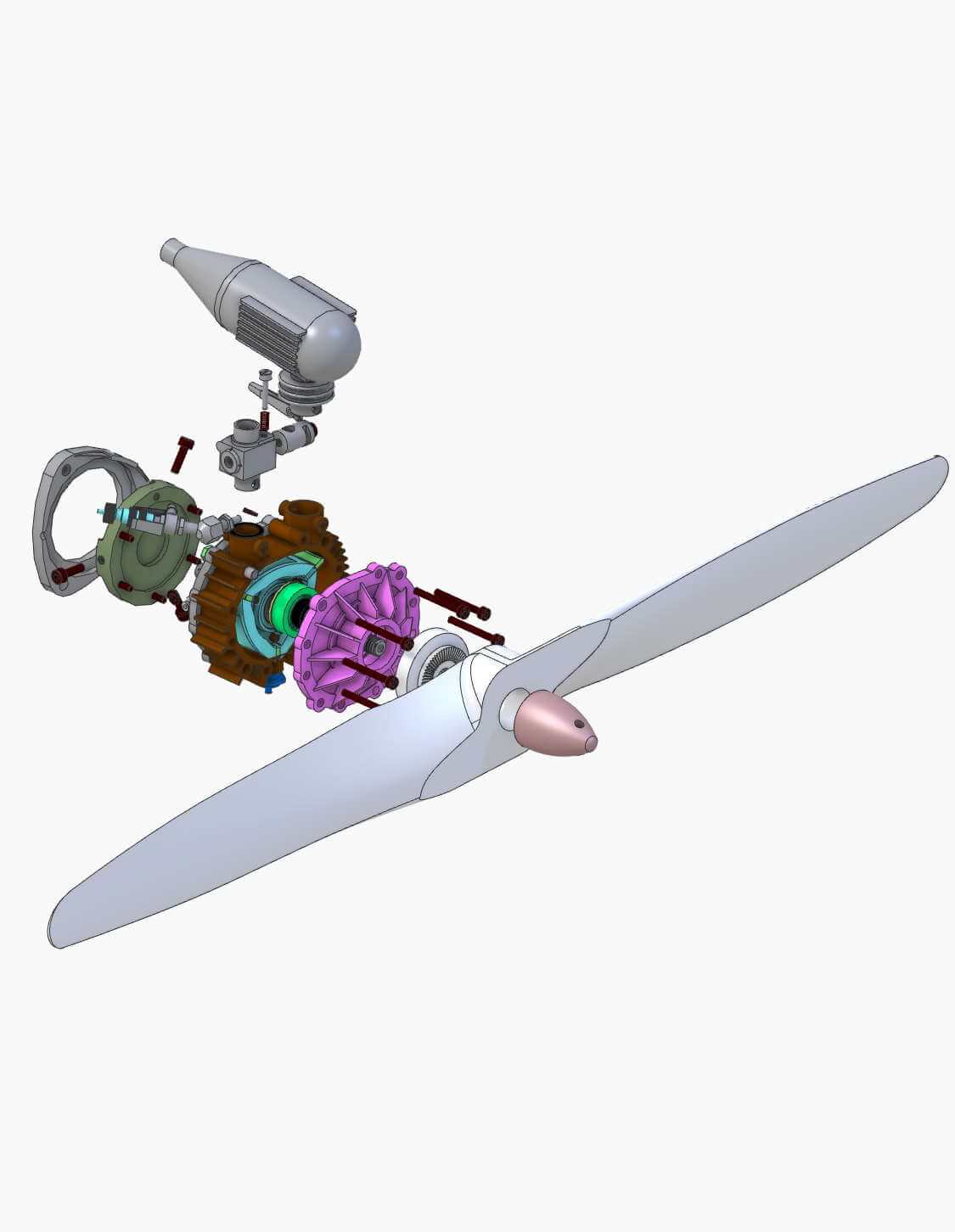
3D Exploded Views
Manually or automatically explode models to reveal the way the components come together and to give a clear picture of assembly. Toggle part trails for your visualization preference.
Section Views
Section views are indispensable when analyzing a model to ensure proper fit, but are also helpful for visualization in general. Realtime section views let you drag up to 3 planes with instant view feedback.
Section views can also be used for modeling. Exposing a cross section with a precise section view and then projecting it into a sketch allows for rapid reverse engineering.
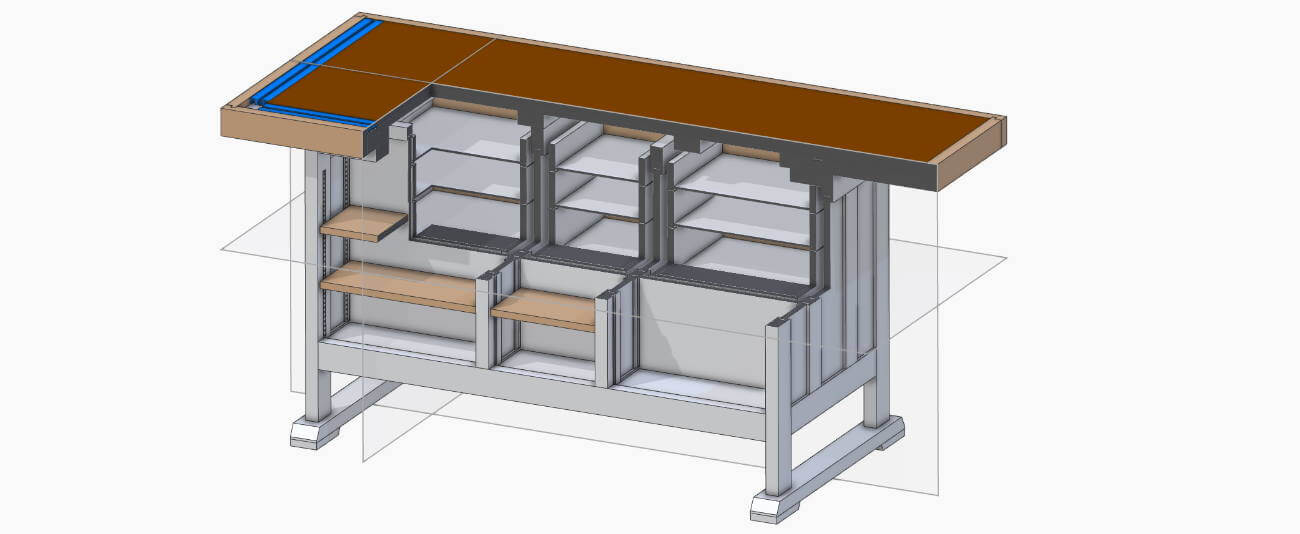
3 real-time section views used simultaneously to peer into a workbench's structure.
Circular And Linear Patterns
Associative, editable patterns delete tedious repetition from your workflow. Select individual components or entire subassemblies as the basis for a pattern.
Create linear patterns in one, two, or three individually controlled directions simultaneously.
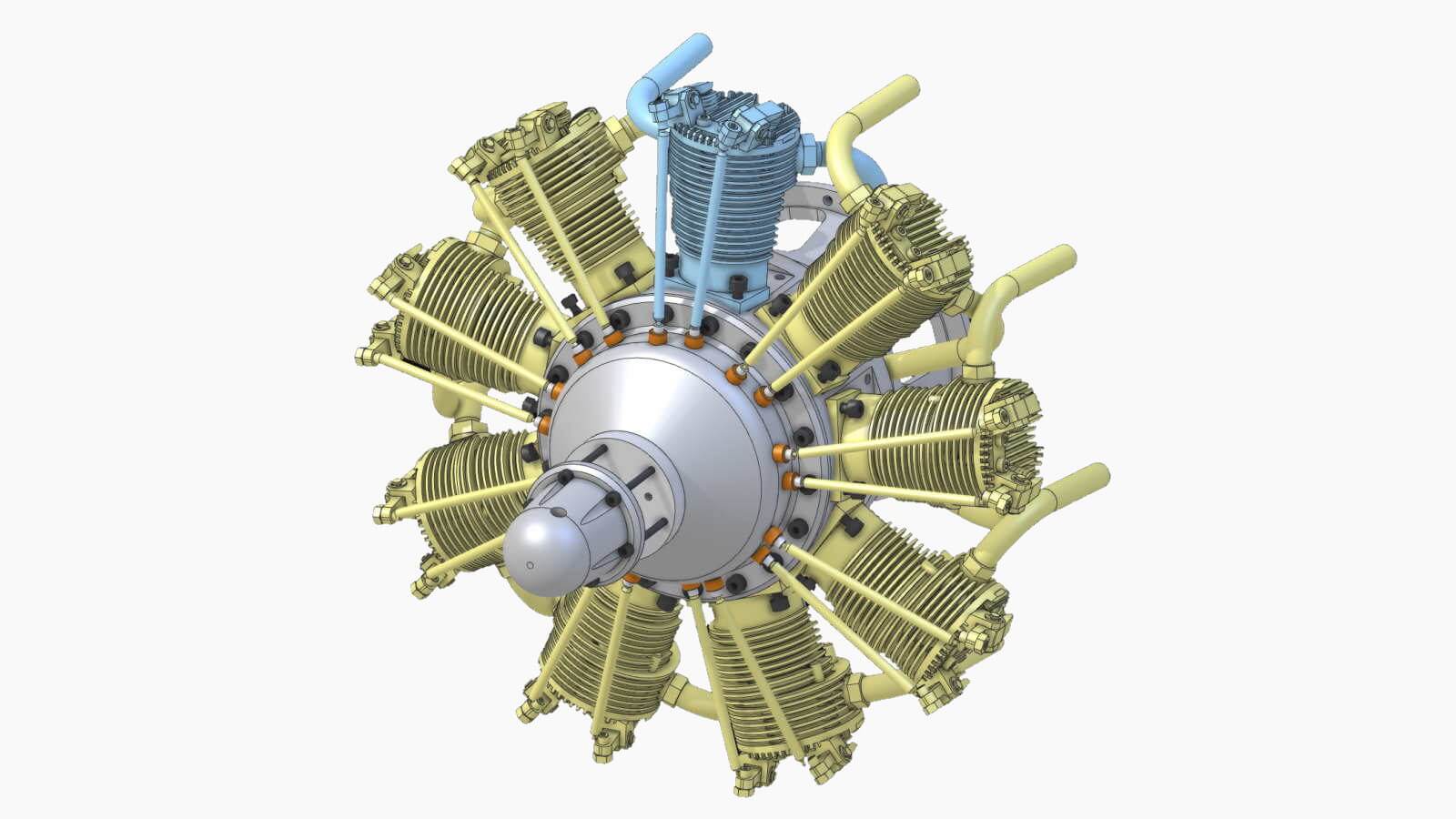
A source subassembly (blue) used to create a pattern (yellow).
Illustration Mode
Enable the Illustration view type to turn the view into a style that looks like a 2D drawing. Use this style to rapidly reorient the model for screenshots.
You can also leverage the real time section views to have up to three active section planes.
These tools make creating instructions, manuals, and marketing materials easy and efficient.
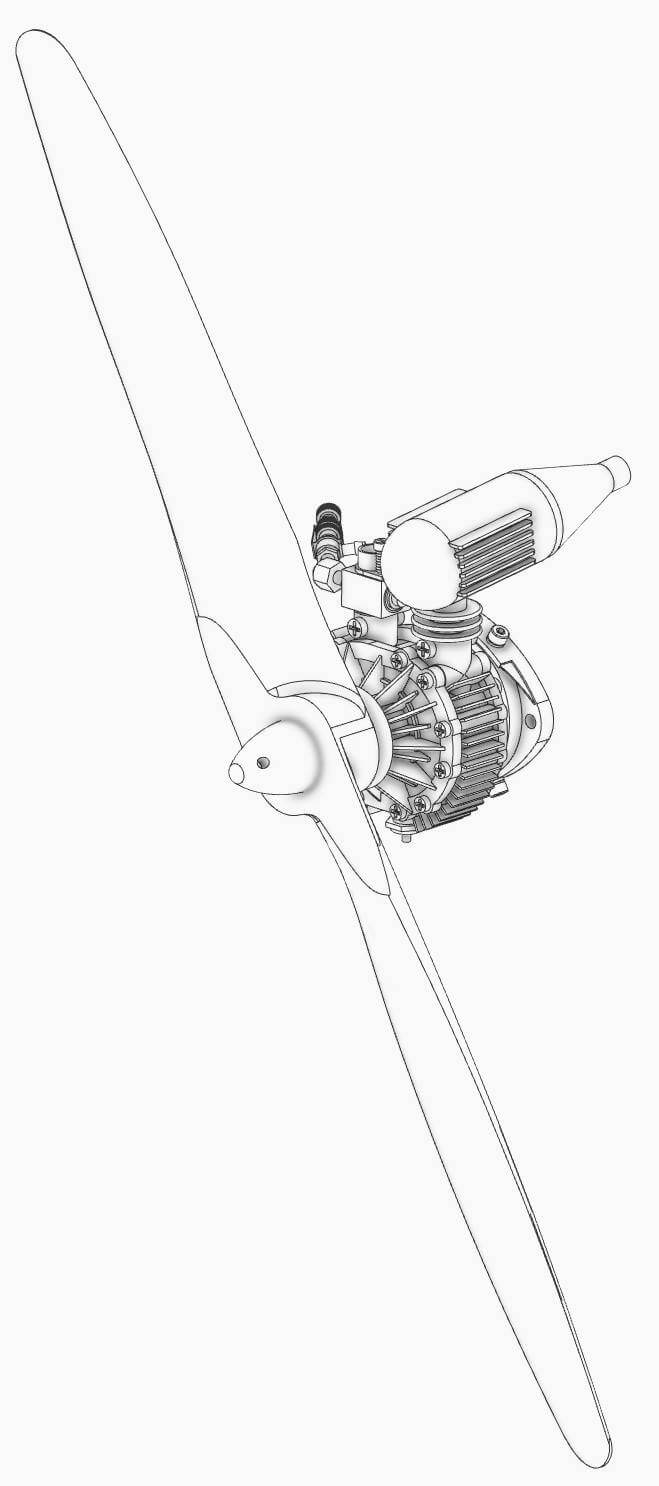
Alibre Design 3d Part Assembly
Source: https://www.alibre.com/atom3d-assembly-design/
Posted by: taylorhimbeyer.blogspot.com

0 Response to "Alibre Design 3d Part Assembly"
Post a Comment